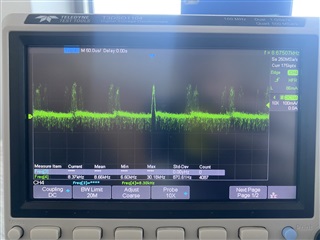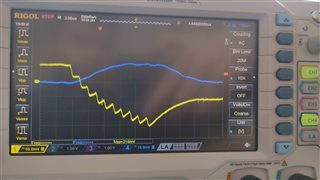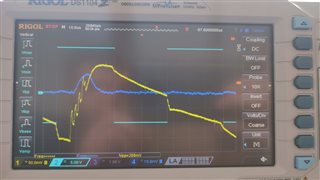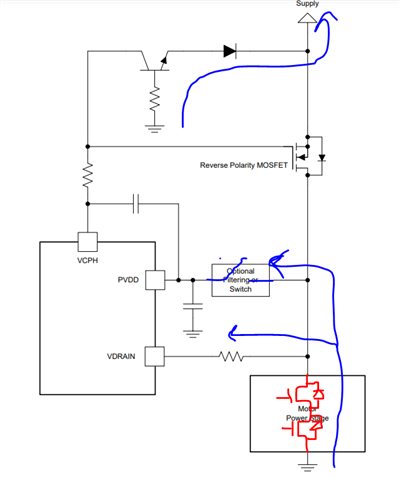Hello,
I have noticed 500mA or so current spikes on PVDD pin apart from normal 35mA power consumption. This has been measured while no PWM signal was applied to the driver and the gates were enabled. After disabling gates, no spikes are visible. At first, I connected it to gate charge pumps, but the frequency of them is far too low (8.3kHz) unless charge pump works in hiccup mode even when no transistors are driven. Could you tell me, if this is a bad measurement method, something is wrong with my design, or if it is a normal operation?





